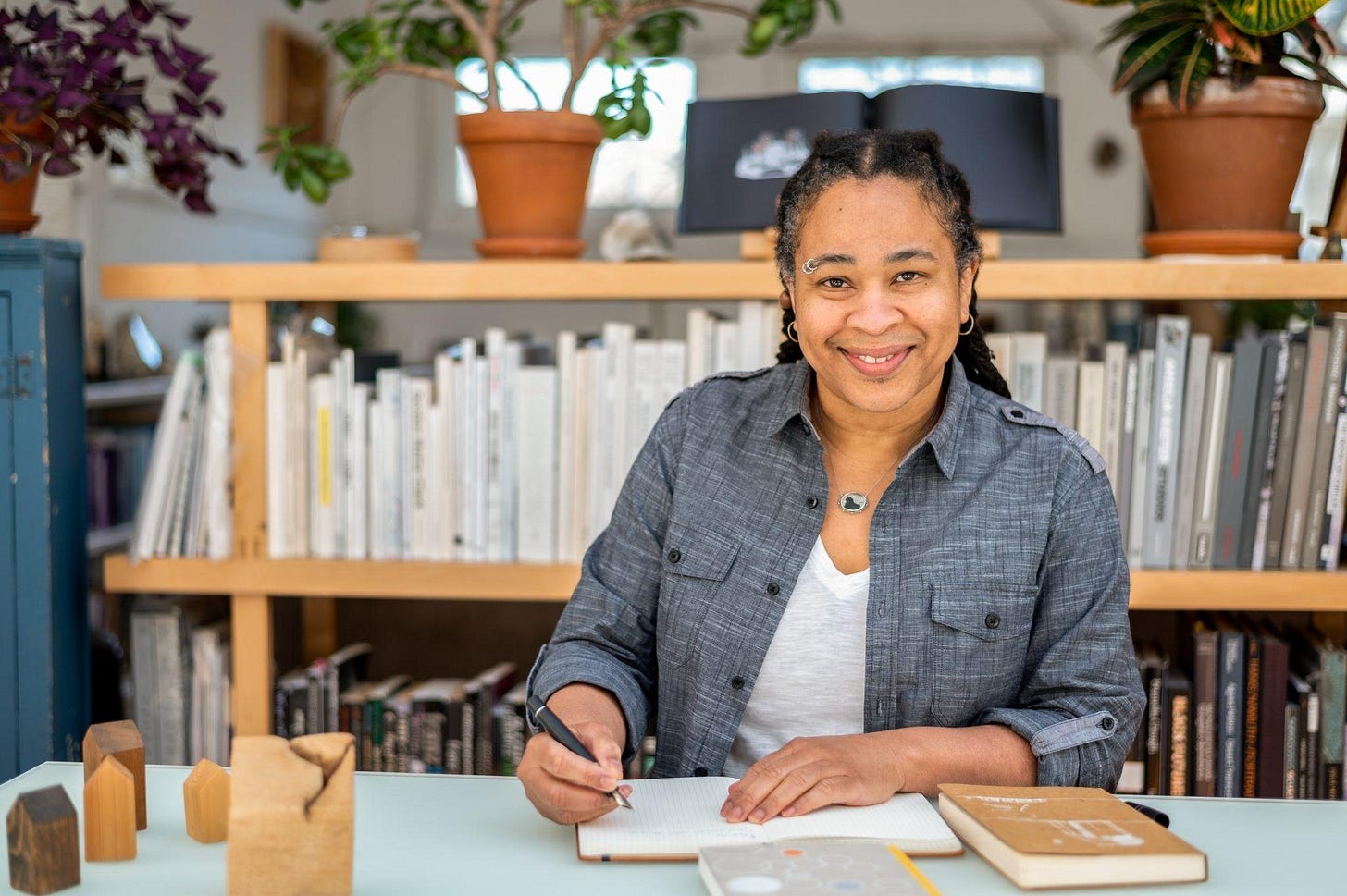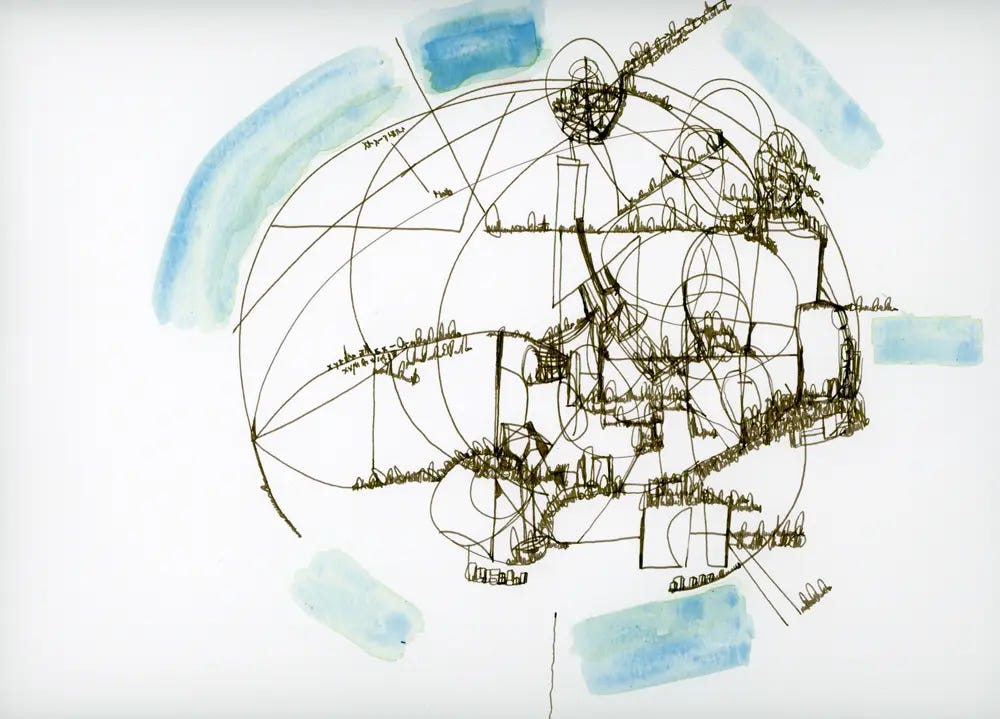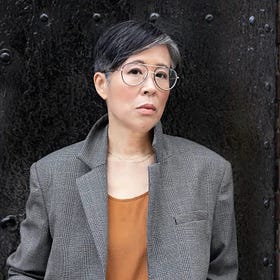Renee Gladman Makes Prose Spiral
"I figured out how to make my own sentences get long and twisty and spiraly and I figured that out through drawing."
Friends,
The heat has fully hit in New York — after weeks of gloom and rain, the city has turned steamy. A friend arrived at our house yesterday declaring it a “two shower day, at minimum,” which sounds right. But still it feels like the best time to be walking around the city; everyone is out in their barely-dressed sort of way, going to hear music, sitting in the parks with their friends, eating slices of pizza on the sidewalks. There’s a glut of good art to see in the city right now, the kids are on their splash pads screaming at the top of their lungs, the buildings in midtown loom even larger in all this bright light. Turn every corner and there’s something to see.
I’ve been thinking about the pleasure of walking around cities since we released our interview with the writer and artist Renee Gladman last week because the first thing Renee wanted to chat about was the way that walking the streets of San Francisco changed her life. She moved to San Francisco in her twenties for graduate school and spent her years there wandering the streets and observing the way that the urban space and the architecture of the buildings interacted to make a landscape that was both physical and psychological. These observations rhymed well with some of the ideas she was developing about prose, about the way that language and the line create landscapes, too.
Since that time, Renee has built a catalog of books and art that resembles nothing else I’ve read. There’s her series of novels about Ravicka, an imagined city. There’s Calamities, which swerves between prose and poetry and somehow simulates a mind moving through the space of a day. There’s her most recent book, My Lesbian Novel, which is a novel in the form of an interview between a writer named Renee Gladman and an unnamed interlocutor — though there’s also a lesbian romance novel plopped in the middle of the interview, interjected every so often because the Renee Gladman character is attempting to draft it.
Throughout all her work, the clear thread is an interest in how bodies and minds move through space, and how the artist can forge structures (real or imagined) within it. We talk about how those preoccupations have changed over time, how menopause changed her experience of time and memory, the work of Henry James, and the way that turning to drawing fundamentally changed her work as a writer.
“I did figure out how to make my own sentences get long and twisty and spiraly and I figured that out through drawing, which blows my mind. To go back into writing and find that now I know how to go up and out and back in language, where I couldn’t figure out how to do that before. That feels amazing.”
It’s a really fun one, and such a privilege to get to talk to Renee. I hope you enjoy it — you can listen to the whole thing here.
In other news:
Renee was our last interview for the month of June, and we’ll be back in September with some new episodes. (Though stay tuned for a surprise or two coming in July and August.) If you’re wanting more episodes while we’re on break, may I suggest looking back at some of our favorite interviews from the past five years?
Those should keep you good company :)
That’s all for now! If you like what we’re up to here, please share the newsletter and the podcast far and wide — it really does help.
Til soon—
Jordan
Nicholson Baker on Unsung Delight
"I wanted make a fuss with a pencil over some piece of life that has not been drawn."
Lisa Ko Destroys A Lifetime of Journals
"If I didn’t write it down, did it even happen? Would I remember it? What would that mean for me?"









